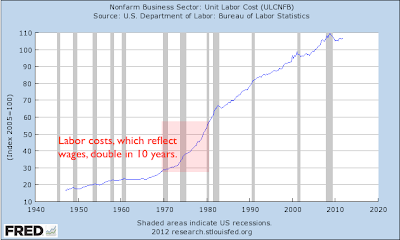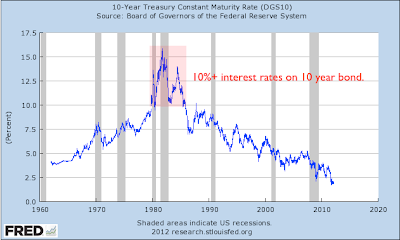You?
It was easy. Cash deposits!
Millions of dollars in small bills changing hands.
Who's going to miss $10,000 here, $20,000 there?
Drug dealers.
That's right. They did. It's why I'm living out of a suitcase now.
- Lethal Weapon 2
If you haven't guessed already, tonight's discussion is tracking your expenses because if you don't know where your money is going, you shouldn't be surprised when you wake up thinking "I've been working for X number of years and what do I have to show for it?"
Disclaimer: Please remember that I’m just a guy sharing information on a blog, and this is NOT official investment advice. Any action that you take as a result of information, analysis, or advertisement on this site is ultimately your responsibility. Please consult your investment adviser before making any investment decisions. During your conversation with said investment adviser, ask why they believe in their recommendation. If you are not convinced by their explanation, any action that you take or forego is also your responsibility. Just in case you missed that, you are responsible for your investments.
With that said, don’t let your investments keep you up at night. If they do keep you awake, you may be taking more risks than you are comfortable with. Talk to a professional about reallocating to less risky investments so that you can sleep. During your conversation with said professional, ask why they believe that their recommendation is less risky. If you are not convinced by their explanation, don’t invest. Remember:
- Lethal Weapon 2
Yes, it's that time of the month again - where we get to play "Where did my money go?" In November 1999, this "game" was like running lines (a.k.a. suicide drill) in basketball practice where you run to the free throw line and back, half court and back, far free throw line and back, and full court and back. Did I mention the loser gets to go twice?
Seriously I had no clue of where my money was going. Even better, sometimes I got to play the game a week early. When I tried to remember what I did that month, I always thought "it's not like I'm living extravagantly."
For example, my one bedroom apartment cost less than $500 per month. When I found it I thought "perfect", though I could tell by the look my hot realtor gave that she wouldn't be visiting if we ever dated. I guess she didn't understand that I needed to save a few bucks if I ever wanted to take her out for something more than a hot dog.
Furthermore I didn't have new furniture or electronics or car. The only debt I had was a student loan, and a credit card that I paid off monthly. I was a frugal person.
Frugal as in - thrifty, economical, careful, cautious, prudent, unwasteful, sparing, scrimping; abstemious, abstinent, austere, self-denying, monkish, spartan; parsimonious, miserly, cheeseparing, penny-pinching. Ok, I don't know about cheeseparing, which sounds like something done in Wisconsin, but I was frugal.
Where did my money go? Why was I unable to save anything? How could I possibly ever meet any financial goals?
While it may seem like wasted time, tracking your expenses is beneficial because then you be able to:
- Set financial goals.
- Monitor where you spend money.
- Budget future expenses.
- Cut unneeded and unnecessary expenses.
- Project Future Expenses.
- Save.
*By the way if you already track your expenses, feel free to skip to the bolded section title In Other News.
Setting Financial Goals
Saving for an emergency fund, buying a new car, saving a downpayment for a house... Setting financial goals is easy because financial goals tend to be our dreams, our desired future. Realizing that dream, let's just say there's a reason it's called work.
Monitoring Where You Spend Money
Monitoring where you spend your money is the first step in planning your financial future. While it may seem mundane to write down your rent, utilities, and groceries on a monthly basis, the really tedious part is writing down your cash expenditures. It takes discipline and is completely necessary if you want to know where you spend your money.
Regarding how you monitor your spending, you have many options:
- Paper - I remember watching my father write entries on paper while watching Sunday sports.
- Computer programs - several are available. The reviews you can find online will be better than any I can provide.
- Spreadsheet - being frugal, I chose to make my own spreadsheet to track my finances.
After only one month of tracking my spending cash, I was able to pinpoint why I was always asking "where did my money go?" It was going to lunches, eating out on weekends, road trips to see my friends, beer, and cover charges. And in case you're wondering, I had a section in my spreadsheet for cash expenditures that I tracked to the dollar as tracking to the penny wasn't worth it.
Budgeting Future Expenses
After tracking your expenditures for a few months, you will then be able to budget. To budget means that you devise a spending plan based upon your income and your financial goals. Then you evaluate the plan based upon your expenditures and achieving your financial goals.
If you budget successfully the first time, congratulations - you are either very good at matching income to expenses OR earn a lot of money.
If you were not successful, try again by cutting expenses, picking up an odd job, or getting a roommate to share the rent. And don't feel too bad because the government isn't very good at budgeting either and they've had a lot more time to practice. Remember though that like government, you can take out debt to make ends meet. Unlike government, you cannot print your own money or raise your own debt limit to keep things going. Avoid debt at all costs.
Cutting Unneeded and Unnecessary Expenses
Everyone who has written this topic takes a free shot at $4 lattes and work lunches. However have you ever looked at how much a month you spend on ATM fees? Taking your money out once can result in a fee up to several dollars. Do it multiple times in a month and you may be able to treat a few friends to $4 lattes. Through budgeting, you should be able to take money out once a month which limits ATM fees.
Budgeting also aids you in identifying other unneeded or unnecessary expenses. When it comes to meeting your financial goals, gym memberships, weekly massages, designer clothes/shoes, cable TV, and even cars can be unnecessary. By the way if you disagree because you need one of those items to do you job, then it is a necessary expense - not unnecessary one.
Projecting Future Expenses
I'm probably a nerd (my wife just said, "what do you mean probably? You developed your own spreadsheet.") because I love projecting how future financial scenarios impact my goals. Tax return coming? Now we meet our vacation budget. Unexpected bonus? Now we'll be able to pay off a student loan 6 months earlier. And what can we do with that extra money once it is paid off? Thank you budgeting.
Saving
Here's one tip that I read a long time ago: Pay yourself first. When you get a check, set aside $25, $100, whatever amount in savings. Pay yourself before paying rent, utilities, anything. This is important because remember that you work to make your life better, not just to pay the bills. By paying yourself first in your budget, you force yourself to review what is unneeded and unnecessary. Thus, budgeting also enables you to save. (Check out Time is Money or Time Earns Money to learn about the dynamics of saving and compound interest.)
Summary
Ultimately by tracking you finances, budgeting your expenses, and saving, you will achieve your financial goals. Now get to it!
In Other News: Let's Revisit Our Discussion on Risk
Building on Market Risk, Are You Managing It, there was an article in Marketwatch yesterday about price earnings ratio of the S&P 500. From Stock valuations now versus last April:
The S&P 500 index, for example, is just 0.3% higher now than where it closed at the end of last April. For all intents and purposes, that’s a wash — especially considering the extraordinary volatility the market has had to endure along the way.
...
Consider first the price-to-earnings ratio when calculated on the basis of trailing as-reported earnings. The reason to calculate the ratio this way: It’s comparable to the historical values back to 1871 that are included in the database maintained by Yale University finance professor Robert Shiller. ( Click here to access that database. )
That ratio for the S&P currently stands at 15.2. The comparable ratio at the end of last April stood at 16.6. So at least according to this measure, stocks are about 8% cheaper today than last April.
What about the so-called Cyclically Adjusted Price Earnings ratio, or CAPE, which Shiller has proposed as a superior measure of stock market valuation? It currently stands at 22.7, versus 23.7 at the end of this past April — a 4% improvement.
Though the magnitude of these improvements are perhaps not overwhelming, at least their trends are in the right direction.
The Cyclically Adjusted Price Earnings ratio is the 10 year moving average discussed in Market Risk, Are You Managing It. Back to the article:
Though Shiller’s Cyclically Adjusted Price Earnings Ratio is slightly lower than it was at the market high last April, it remains significantly above its long-term norms. In fact, it is 38% higher than the ratio’s average back to the late 1800s, and 43% higher than its median.
This cannot easily be dismissed because Shiller’s CAPE has an impressive record forecasting the market’s long-term return. Consider a simple econometric model that uses the CAPE to predict the S&P 500’s inflation-adjusted dividend-adjusted return — a model that is quite significant at the 95% confidence level that statisticians often use to determine if a pattern is genuine.
That model’s current forecast: Less than a 1% annualized real total return over the next decade.
Very interesting indeed... and with that, it's time to call it a night.
With that said, don’t let your investments keep you up at night. If they do keep you awake, you may be taking more risks than you are comfortable with. Talk to a professional about reallocating to less risky investments so that you can sleep. During your conversation with said professional, ask why they believe that their recommendation is less risky. If you are not convinced by their explanation, don’t invest. Remember:
- It’s your nest egg.
- Opportunities are easier to make up than losses.















